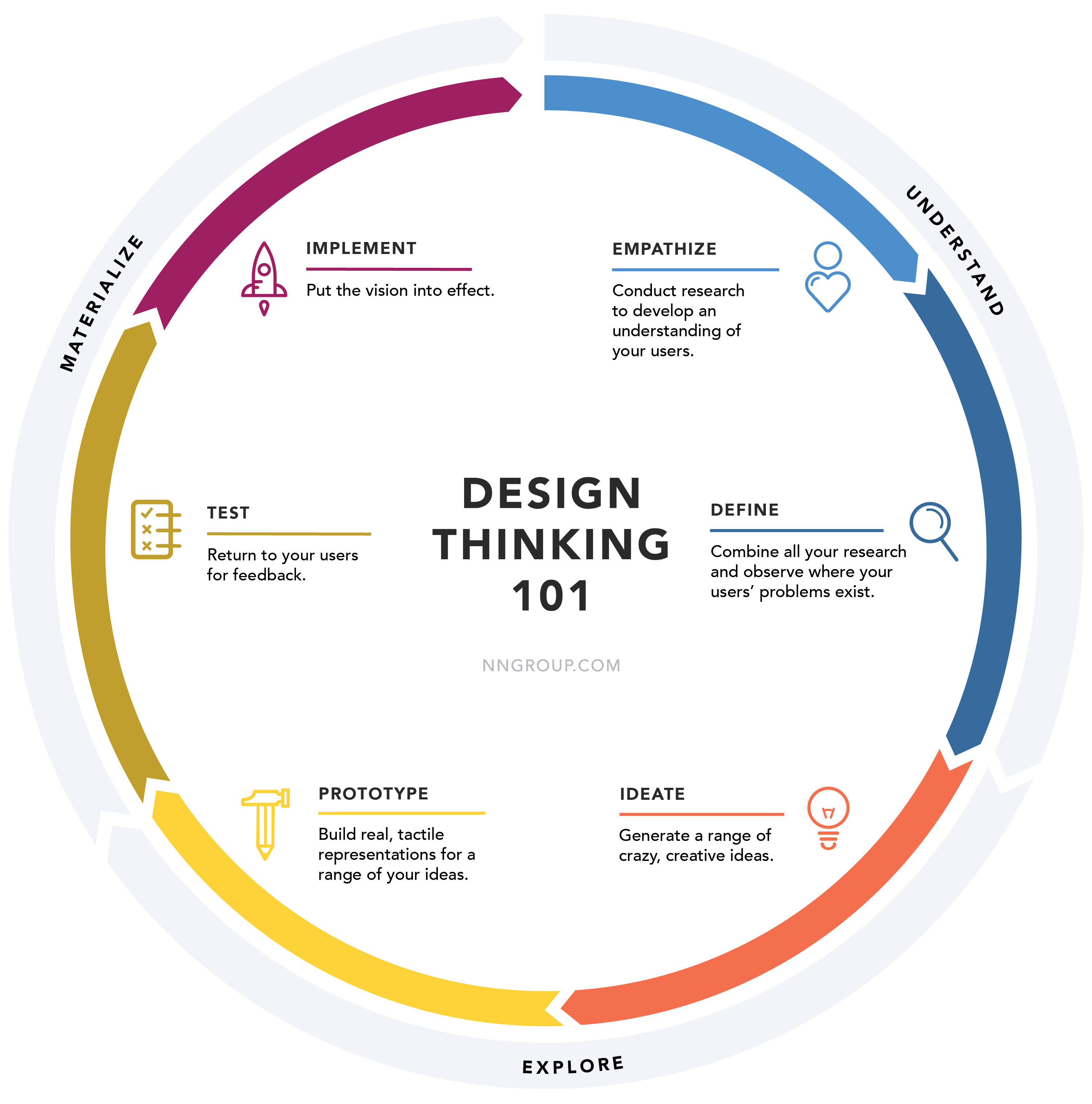Unlocking Innovation: The Power of Design Thinking in Product Development
1. Embrace Creativity with Design Thinking!
In today’s fast-paced and ever-evolving world, innovation is key to staying ahead of the competition. One of the most powerful tools for unlocking innovation is design thinking. Design thinking is a creative approach to problem-solving that puts the user at the center of the process. By empathizing with the user, defining the problem, ideating solutions, prototyping, and testing, design thinking allows teams to come up with innovative solutions that truly meet the needs of the end-user.
Embracing creativity with design thinking is all about breaking free from traditional thinking patterns and exploring new and unconventional ideas. It encourages teams to think outside the box, challenge assumptions, and push boundaries. By fostering a culture of creativity and experimentation, design thinking can lead to breakthrough innovations that have the power to transform industries.
Design thinking is not just about coming up with new products or services; it’s about creating meaningful and impactful solutions that solve real-world problems. By putting the user at the center of the process, design thinking ensures that the end product truly meets the needs and desires of the people it is intended for. This user-centric approach leads to products that are not only functional and aesthetically pleasing but also intuitive and user-friendly.
One of the key principles of design thinking is empathy. By putting yourself in the shoes of the user, you can better understand their needs, wants, and pain points. This deep understanding allows teams to come up with solutions that are truly meaningful and valuable to the end-user. By empathizing with the user, teams can create products that resonate with people on a deeper level and have a lasting impact on their lives.

Image Source: nngroup.com
Another important aspect of design thinking is iteration. The design thinking process is not linear; it is iterative. Teams go through multiple rounds of ideation, prototyping, and testing to continuously refine and improve their ideas. This iterative approach allows teams to quickly test and validate their ideas, gather feedback, and make necessary adjustments. By embracing iteration, teams can rapidly iterate on their ideas and bring them to market faster.
Design thinking also encourages collaboration and cross-disciplinary teamwork. By bringing together individuals with diverse backgrounds, skills, and perspectives, design thinking allows teams to approach problems from multiple angles and come up with more creative solutions. By fostering a culture of collaboration and inclusivity, design thinking can unleash the full potential of teams and drive innovation forward.
In conclusion, embracing creativity with design thinking is a powerful way to unlock innovation in product development. By putting the user at the center of the process, fostering a culture of creativity and experimentation, and embracing empathy, iteration, and collaboration, teams can come up with breakthrough solutions that truly meet the needs of the end-user. Design thinking is not just a process; it is a mindset that can transform industries and drive positive change in the world. So, embrace creativity with design thinking and unleash the power of innovation in your product development process.
Unlocking Innovation: The Power of Design Thinking in Product Development
In today’s fast-paced and competitive market, the ability to transform ideas into successful products is crucial for businesses looking to stay ahead of the curve. This is where design thinking comes into play, offering a unique approach to innovation that focuses on understanding the needs of users and creating solutions that address those needs effectively.
Design thinking is a human-centered, iterative process that puts empathy at its core. By putting themselves in the shoes of the end-users, designers can gain a deeper understanding of their needs, preferences, and pain points. This empathy-driven approach allows for more meaningful and innovative solutions to be developed, as designers are able to create products that truly resonate with their target audience.
One of the key principles of design thinking is prototyping. By quickly creating and testing prototypes of their ideas, designers can gather valuable feedback from users and stakeholders early on in the development process. This feedback allows for rapid iteration and refinement of ideas, ultimately leading to more successful and user-centric products.
Another important aspect of design thinking is collaboration. By bringing together individuals from diverse backgrounds and disciplines, teams can leverage different perspectives and skills to come up with innovative solutions. This collaborative approach fosters creativity and encourages out-of-the-box thinking, leading to breakthrough ideas that may not have been possible otherwise.
Design thinking also emphasizes the importance of iteration and experimentation. Rather than being tied to a single idea or solution, designers are encouraged to explore multiple possibilities and iterate on their designs based on feedback and testing. This flexibility allows for more innovative and effective products to be developed, as designers can refine their ideas based on real-world data and user input.
Overall, design thinking is a powerful tool for unlocking innovation in product development. By embracing creativity, empathy, prototyping, collaboration, and iteration, designers can transform their ideas into successful products that truly resonate with their target audience. By incorporating design thinking into their processes, businesses can stay ahead of the curve and deliver products that meet the evolving needs of their customers.
Design Thinking: A Key Approach to Product Innovation